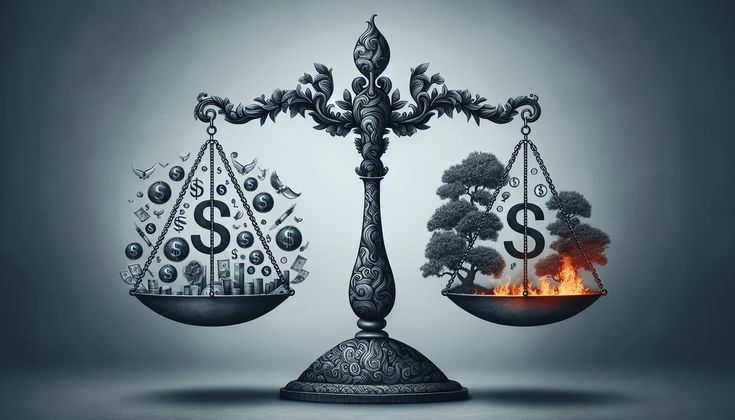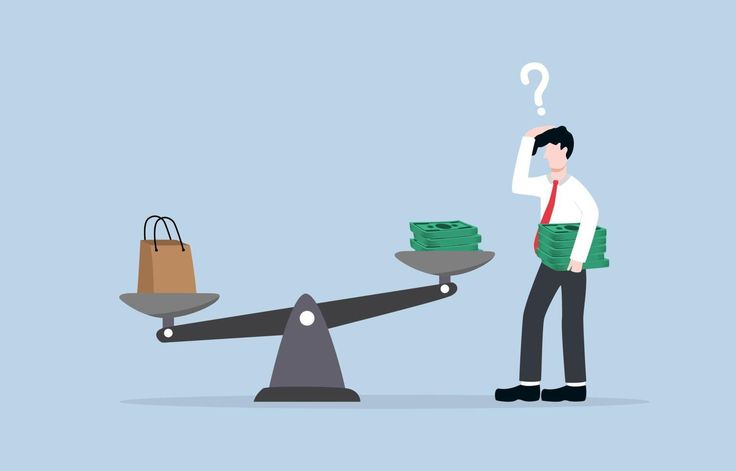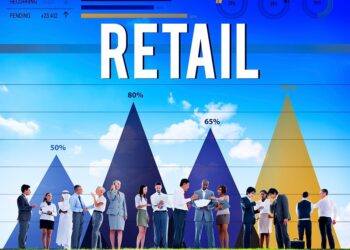In the unpredictable currents of the global economy, few phenomena erode the hard-earned value of money as insidiously as inflation. It’s the silent thief that, over time, diminishes purchasing power, making a dollar today worth less tomorrow. While seemingly abstract, inflation’s tangible impact can be felt in the rising cost of everyday goods, from groceries to gasoline, and the shrinking real value of savings. Understanding its dynamics and, more importantly, implementing strategies to mitigate its effects are crucial for anyone seeking to guard their savings and preserve their financial well-being. This isn’t merely an economic theory; it’s a pressing concern that demands proactive measures to ensure your financial future remains secure against the erosion of inflationary pressures.
What is Inflation?
To effectively guard against inflation, we must first clearly define what it is and how it manifests in the economy. It’s more than just prices going up; it’s a complex interplay of economic forces.
A. Defining Inflation: Erosion of Purchasing Power
At its core, inflation refers to the rate at which the general level of prices for goods and services is rising, and, consequently, the purchasing power of currency is falling. When inflation is high, the same amount of money buys fewer goods and services than it did before.
- General Price Level Increase: It’s not just one or two items becoming more expensive, but a sustained increase across a broad basket of goods and services.
- Decreased Purchasing Power: This is the direct consequence. Your savings, which are a fixed amount of currency, can acquire less as prices rise. For instance, if you save $100 today, and inflation is 5% over a year, that $100 will only buy what $95 bought a year ago, effectively losing 5% of its real value.
- Inflation Rate Measurement: Governments and economic institutions measure inflation using various indices, most commonly the Consumer Price Index (CPI). The CPI tracks the average change over time in the prices paid by urban consumers for a market basket of consumer goods and services. Different countries have their own variations (e.g., in Indonesia, it’s measured by Badan Pusat Statistik – BPS).
B. The Causes of Inflation: A Multifaceted Phenomenon
Inflation is rarely caused by a single factor but is typically the result of several economic forces working in concert.
- Demand-Pull Inflation: This occurs when there is too much money chasing too few goods. When aggregate demand in an economy outpaces the economy’s ability to produce goods and services, prices are driven up.
- Strong Consumer Spending: Buoyed by high employment, rising wages, or government stimulus.
- Easy Monetary Policy: Central banks (like the Federal Reserve in the US, Bank Indonesia in Indonesia) injecting too much money into the system through low interest rates or quantitative easing.
- Government Spending: Large government expenditures without a corresponding increase in production.
- Cost-Push Inflation: This occurs when the costs of producing goods and services rise, forcing businesses to increase their prices to maintain profit margins.
- Rising Raw Material Costs: Increases in the price of commodities like oil, natural gas, metals, or agricultural products.
- Wage Increases: When labor costs rise significantly, especially if not accompanied by productivity gains.
- Supply Chain Disruptions: Events (like pandemics, geopolitical conflicts, natural disasters) that disrupt global supply chains can lead to shortages and higher transportation costs.
- Increased Taxes/Regulations: Government policies that increase the cost of doing business.
- Built-In (Wage-Price Spiral) Inflation: This occurs when workers demand higher wages to compensate for rising prices, and businesses, in turn, raise prices further to cover the increased labor costs. This creates a self-perpetuating cycle.
- Currency Devaluation: If a country’s currency loses value relative to others, imported goods become more expensive, contributing to inflation.
C. The Impact of Inflation: Beyond Your Wallet
Inflation has far-reaching consequences that extend beyond the immediate erosion of purchasing power.
- Erosion of Savings: As detailed, fixed savings lose real value over time. Bank accounts and bonds with low-interest rates are particularly vulnerable.
- Reduced Purchasing Power: For consumers, this means their fixed income can buy less, leading to a decline in their standard of living if wages don’t keep pace.
- Uncertainty and Reduced Investment: High and unpredictable inflation creates economic uncertainty, discouraging long-term investment by businesses and individuals as they cannot accurately forecast future costs and returns.
- Redistribution of Wealth: Inflation can disproportionately affect those on fixed incomes (e.g., retirees) and those who hold cash, while benefiting debtors (as the real value of their debt decreases).
- Interest Rate Volatility: Central banks often respond to high inflation by raising interest rates, which impacts borrowing costs for homes, cars, and businesses, potentially slowing economic growth.
Understanding these fundamentals is the first step in building a robust strategy to protect your financial assets.
Proactive Strategies: Guarding Your Savings Against Inflation
Protecting your savings from inflation isn’t about avoiding it entirely (a moderate level of inflation is often considered healthy for an economy) but about ensuring your investments grow faster than the rate of inflation. This requires a well-thought-out, diversified strategy.
A. Invest in Inflation-Protected Securities
One of the most direct ways to guard against inflation is to invest in assets specifically designed to do so.
- Inflation-Protected Bonds:
- Treasury Inflation-Protected Securities (TIPS): Issued by the U.S. Treasury, the principal value of TIPS adjusts with inflation (measured by the CPI). When the principal adjusts, the interest payment (a fixed rate applied to the principal) also increases, offering a direct hedge against inflation. They are considered very safe, but their returns might be lower in periods of low inflation.
- Inflation-Linked Bonds in Other Countries: Many countries offer similar inflation-indexed bonds (e.g., inflation-indexed government bonds in Canada, UK index-linked gilts, Indonesian Inflation-Linked Sukuk/Bonds if available).
- Series I Savings Bonds (I Bonds): In the U.S., these are another government-backed savings product with an interest rate that combines a fixed rate and a rate that adjusts semi-annually for inflation. They are a safe, low-risk way to protect small to medium amounts of savings.
B. Consider Real Assets and Commodities
Real assets tend to perform well during inflationary periods because their value is tied to tangible goods that become more expensive.
- Real Estate:
- Direct Property Ownership: Property values and rental income often rise with inflation, acting as a natural hedge. However, it requires significant capital, is illiquid, and comes with management responsibilities.
- Real Estate Investment Trusts (REITs): These are companies that own, operate, or finance income-producing real estate. They offer a liquid way to invest in real estate, providing diversification and often paying high dividends, which can grow with inflation as rents increase.
- Commodities: Investing in raw materials like oil, gold, silver, industrial metals, and agricultural products can offer protection, as their prices often rise during inflationary times.
- Gold and Precious Metals: Historically considered a safe haven during economic uncertainty and inflation. They are a store of value.
- Broad Commodity ETFs/Funds: Investing in an Exchange-Traded Fund (ETF) or mutual fund that tracks a basket of commodities offers diversification and reduces the risk associated with a single commodity.
- Energy Stocks: Companies involved in oil and gas production can benefit from rising energy prices.
- Infrastructure Investments: Investing in infrastructure projects (e.g., utilities, transportation hubs) often comes with inflation-linked revenue streams, providing a stable, inflation-resistant income.
C. Equity Investments: Stocks and Funds
Stocks can be a powerful hedge against inflation, especially in the long run, but selection is key.
- Companies with Pricing Power: Invest in companies that have strong brands, essential products, or dominant market positions, allowing them to pass on increased costs to consumers without significant loss of sales. These companies maintain or grow their profit margins despite inflation.
- Dividend-Paying Stocks: Companies that consistently pay and ideally grow their dividends can provide an income stream that adjusts over time, offsetting some inflationary impact.
- Growth Stocks (Carefully): While growth stocks can be volatile, companies with strong growth prospects may outpace inflation through innovation and market expansion. However, they can be more sensitive to rising interest rates (often used to combat inflation), which can make future earnings less attractive.
- Broad Market Index Funds/ETFs: Investing in a diversified index fund (e.g., S&P 500 equivalent in your local market) can provide a general hedge, as the corporate earnings underlying these indexes tend to rise with inflation over the long term. This approach provides diversification and minimizes individual stock risk.
D. Review Your Cash Holdings and Bonds
Cash and traditional fixed-rate bonds are most vulnerable to inflation.
- Minimize Excess Cash: While an emergency fund is crucial, holding excessive amounts of cash in low-interest savings accounts means its purchasing power is constantly being eroded. Keep only what’s necessary for short-term needs and emergencies.
- Consider Short-Term Bonds: If you must hold bonds, shorter-term bonds are less susceptible to interest rate risk (which rises with inflation) than long-term bonds. Their maturity allows for reinvestment at potentially higher rates more frequently.
- Floating-Rate Bonds: These bonds have interest rates that adjust periodically based on a benchmark rate, offering some protection as rates rise during inflationary periods.
E. Diversification Across Asset Classes
No single asset class is a perfect inflation hedge. Diversification is paramount.
- Balanced Portfolio: Spread your investments across various asset classes—stocks, bonds (including inflation-protected ones), real estate, commodities, and potentially alternative investments.
- Geographical Diversification: Invest in different countries or regions. Inflationary pressures might vary globally, and a strong economy in one region could offset weaknesses elsewhere.
- Regular Rebalancing: Periodically review and rebalance your portfolio to ensure it remains aligned with your risk tolerance and inflation protection goals. If one asset class has grown significantly, trim it and reallocate to underperforming assets.
F. Debt Management: Leverage Inflation to Your Advantage (Carefully)
While inflation erodes the value of savings, it can devalue fixed-rate debt.
- Fixed-Rate Debt: For homeowners with fixed-rate mortgages, inflation can be a subtle benefit. As your wages (hopefully) rise with inflation, the fixed monthly mortgage payment becomes a smaller percentage of your income in real terms. The real value of your debt effectively decreases over time.
- Avoid Variable-Rate Debt: Steer clear of variable-rate loans during inflationary periods, as their interest rates will likely rise, increasing your monthly payments and financial burden.
- Strategic Borrowing: While generally advisable to minimize debt, strategically taking on fixed-rate debt for appreciating assets (like a home) can be a nuanced inflation strategy. However, this carries its own risks and should be approached with caution and careful financial planning.
G. Invest in Yourself: Human Capital
Perhaps the most underrated inflation hedge is investing in your own skills and career.
- Skill Enhancement: Acquiring new, in-demand skills can increase your earning potential, allowing your wages to keep pace with or even outpace inflation.
- Career Advancement: Seeking promotions, taking on leadership roles, or exploring entrepreneurial ventures can lead to higher income streams that are more resilient to inflationary pressures.
- Negotiation Power: A highly skilled and valuable employee has more leverage to negotiate for raises that account for inflation.
Your earning capacity is a dynamic asset that can adapt to economic changes.
Practical Considerations and Advanced Tactics
Beyond the core strategies, several practical considerations and more advanced tactics can further strengthen your defense against inflation.
A. Understand Inflation’s Types and Your Exposure
Not all inflation is the same. Understanding its nuances can help tailor your strategy.
- Headline vs. Core Inflation: Headline inflation includes volatile components like food and energy, while core inflation excludes them. Core inflation is often seen as a better indicator of underlying price trends.
- Producer Price Index (PPI): Tracks prices from the producer’s perspective. Rising PPI can be a leading indicator of future consumer inflation.
- Your Personal Inflation Rate: The CPI is an average. Your personal inflation rate might be different depending on your spending habits (e.g., if you drive a lot, rising gas prices impact you more). Monitor your own spending to see where inflation hits hardest.
B. Leverage Professional Financial Advice
For complex financial situations, particularly those involving significant assets or intricate investment vehicles, seeking guidance from a certified financial advisor is invaluable. They can help:
- Tailor Strategies: Develop a personalized inflation-hedging strategy aligned with your specific financial goals, risk tolerance, and time horizon.
- Diversify Effectively: Provide insights into advanced diversification techniques and alternative investments that might not be accessible to individual investors.
- Stay Informed: Offer expertise on market trends, central bank policies, and global economic shifts that influence inflation.
C. Consider Alternative Investments (with Caution)
Beyond traditional assets, some alternative investments can offer inflation protection but come with higher risks and often require more due diligence.
- Cryptocurrencies (Highly Volatile): Some proponents argue that Bitcoin, for example, can act as a digital gold, a hedge against inflation due to its decentralized nature and fixed supply. However, their extreme volatility makes them a high-risk, speculative investment, not a reliable inflation hedge for most.
- Private Equity/Venture Capital (Illiquid): Investments in private companies can offer strong returns that outpace inflation, but they are highly illiquid, require substantial capital, and are suitable only for accredited investors with a long-term horizon.
- Hedge Funds: Some hedge funds employ strategies designed to profit from inflationary environments, but they are typically only accessible to institutional or ultra-high-net-worth investors.
These alternatives are not for the faint of heart and should only be considered after careful research and consultation with experts.
D. Stay Informed About Central Bank Policies
Central banks (e.g., Bank Indonesia, Federal Reserve) play a crucial role in managing inflation through monetary policy.
- Interest Rate Hikes: Raising interest rates is a primary tool to cool down an overheating economy and combat inflation by making borrowing more expensive, which slows spending.
- Quantitative Tightening: Reducing the money supply by selling off assets from their balance sheets.
- Forward Guidance: Central banks provide signals about their future policy intentions, which can influence market expectations and investor behavior.
Monitoring central bank statements and economic indicators can provide insights into potential inflationary pressures and policy responses.
E. Revisit Your Retirement and Long-Term Savings
Inflation is particularly detrimental to long-term savings for retirement.
- Increase Contributions: If possible, increase your contributions to retirement accounts (e.g., 401(k)s, IRAs, or equivalent pension schemes in Indonesia like BPJS Ketenagakerjaan or private pension funds). The power of compounding returns is vital to outpace inflation over decades.
- Asset Allocation: Ensure your retirement portfolio has a sufficient allocation to growth-oriented assets (like stocks, real estate) that have historically outperformed inflation over the long run, especially when you are younger.
- Long-Term Care Planning: Consider the future costs of healthcare, which tend to inflate at a higher rate than general inflation, and plan accordingly.
F. Be Mindful of “Shrinkflation”
Beyond direct price increases, be aware of “shrinkflation,” where the price of a product remains the same, but the quantity or size decreases (e.g., a bag of chips with fewer chips, a chocolate bar that’s slightly smaller). This is a subtle way for companies to pass on costs without a headline price increase, effectively contributing to inflation by giving you less for your money.
G. Optimize Your Spending and Budget
While investments protect your wealth, prudent spending ensures you maintain your lifestyle.
- Budgeting: Maintain a detailed budget to understand where your money is going and identify areas for optimization.
- Negotiate Costs: Don’t hesitate to negotiate for better rates on services (e.g., internet, insurance) or challenge price increases.
- Delay Large Purchases: If possible, delay large, non-essential purchases during periods of high inflation, as prices might stabilize or even decrease later.
- Embrace Frugality: Simple habits like meal prepping, optimizing energy consumption at home, and seeking out deals can add up to significant savings in real terms.
The Future of Inflation: A Continuous Vigilance
Predicting future inflation rates is notoriously difficult, as they are influenced by a complex interplay of global economic, geopolitical, and technological factors. However, the lessons learned from past inflationary periods underscore the importance of continuous vigilance and adaptability in financial planning.
A. Global Supply Chain Reshaping
The recent disruptions have highlighted the fragility of global supply chains. Future inflation might be influenced by efforts to:
- Reshoring/Nearshoring: Bringing production closer to home or to neighboring countries can reduce some supply chain risks but might increase labor costs, influencing prices.
- Diversification of Suppliers: Companies spreading their supply base across more regions to reduce reliance on single points of failure, which could stabilize prices over time.
- Automation and AI in Logistics: While potentially increasing initial investment, greater automation in supply chains and logistics could eventually lead to more efficient and less inflation-prone distribution.
B. Climate Change and Green Transition
The transition to a greener economy could have both inflationary and disinflationary impacts.
- Carbon Pricing: Taxes on carbon emissions or carbon credits could initially increase the cost of energy and goods produced using fossil fuels.
- Investment in Renewables: Large-scale investment in renewable energy infrastructure could, in the long term, lead to lower and more stable energy prices, reducing a significant cost-push factor.
- Climate-Related Disasters: More frequent and severe weather events could disrupt agricultural output and supply chains, leading to price volatility for food and other goods.
C. Demographics and Labor Markets
Long-term demographic trends will also play a role in inflation.
- Aging Populations: In many developed countries, an aging workforce and declining birth rates could lead to labor shortages, putting upward pressure on wages and, consequently, prices.
- Automation and AI: While potentially inflationary in the short term (due to investment costs), widespread adoption of automation and AI could increase productivity and potentially put downward pressure on labor costs for certain tasks, acting as a disinflationary force in the long run.
D. Geopolitical Landscape
Ongoing geopolitical tensions, trade wars, and conflicts can significantly impact inflation by:
- Disrupting Energy Markets: Conflicts in major energy-producing regions can cause oil and gas prices to spike.
- Trade Restrictions: Tariffs and trade barriers increase the cost of imported goods.
- Sanctions: Economic sanctions against specific countries can limit supply and drive up prices for certain commodities.
E. The Role of Central Banks and Fiscal Policy
Central banks will continue to refine their tools and communication strategies to manage inflation expectations. The interplay between monetary policy (central banks) and fiscal policy (government spending and taxation) will be crucial. High government debt levels can also influence inflationary pressures and market confidence.
Conclusion
Inflation, the subtle yet relentless force that erodes purchasing power, remains a paramount concern for individuals and economies worldwide. While its causes are multifaceted and its future trajectory uncertain, understanding its mechanisms and implementing proactive strategies are indispensable for safeguarding your financial future.
Guarding your savings against inflation is not a passive endeavor; it requires active participation through intelligent investment and prudent financial management. By strategically diversifying your portfolio into inflation-protected securities, real assets like real estate and commodities, and equities with strong pricing power, you can build a robust defense. Simultaneously, being mindful of your cash holdings, managing debt strategically, and continuously investing in your own human capital are equally vital components of a comprehensive approach. The future economic landscape will undoubtedly present new challenges, but with continuous vigilance, informed decision-making, and a disciplined approach to financial planning, you can navigate inflationary pressures, preserve the real value of your wealth, and ensure your financial well-being remains secure for years to come. This continuous journey of adaptation and intelligent investment is the true essence of guarding your savings.















